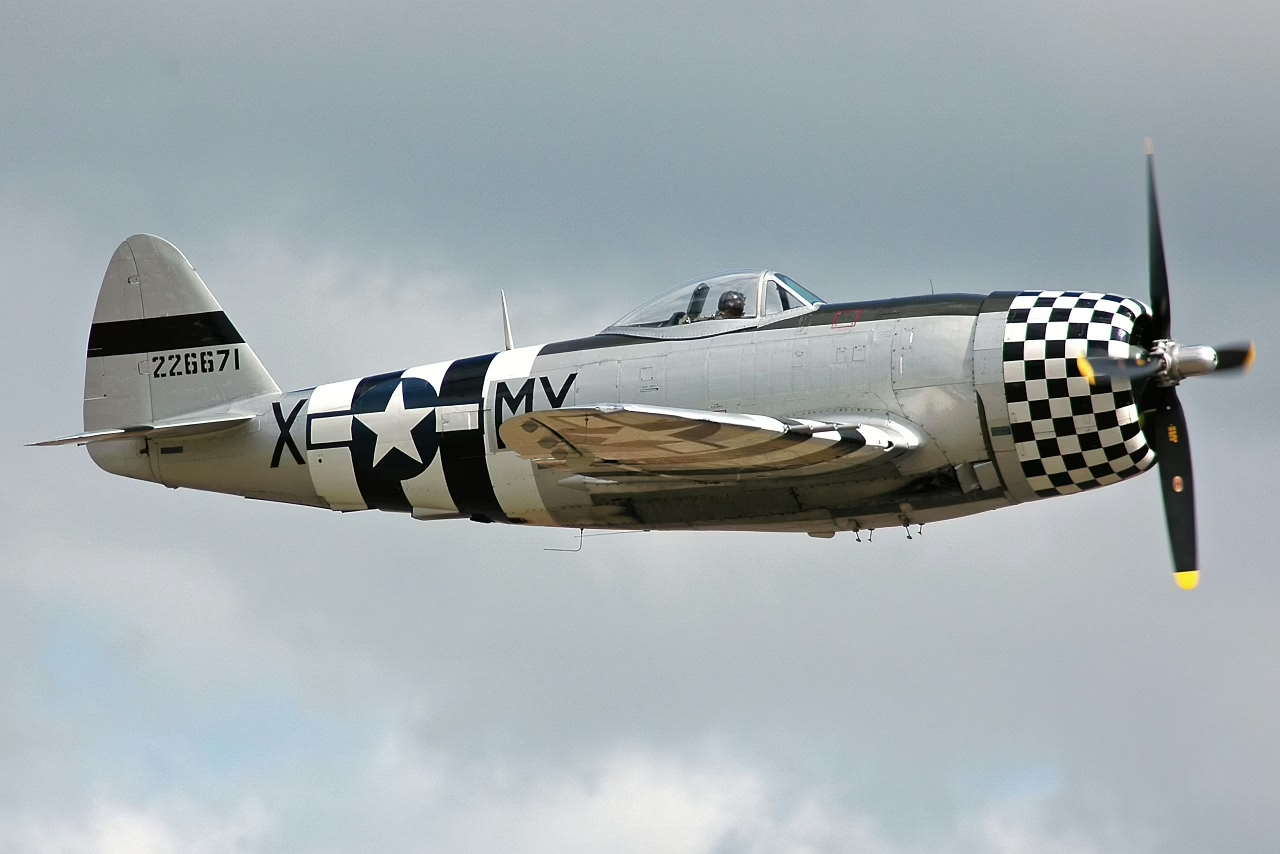Republic P-47 Thunderbolt History
The Republic P-47 Thunderbolt was the largest single-engine craft built during World War II, and the Army Air Force acquired it in greater numbers than any other fighter. The Thunderbolt’s ability to absorb incredible damage and stay aloft was legendary, and pilots affectionately referred to it as the “Jug.”
This famous aircraft was a further development of the mediocre Republic P-43 Lancer. It was built around a 2,000-horsepower Pratt & Whitney radial engine and carried a supercharger in the aft section of the fuselage. The prototype XP-47 flew for the first time in May 1941 and showed great promise, but a succession of technical problems delayed production until spring 1942.
Orders were placed in September 1940 for one hundred and seventy-one P-47Bs and six hundred and two P-47Cs, and on 6 May 1941 the XP-47B made its first flight. The B and C models were basically similar, but C was given a slightly longer fuselage to improve manoeuvrability.
The first Republic P-47 Thunderbolt fighters entered United States Army Air Force (USAAF) service in 1942, becoming operational with Eighth Air Force units over Europe in April 1943 and in the Pacific theatre some two months later.
When the Thunderbolt finally reached England in January 1943, its lumbering size was greeted with scepticism by many pilots. In combat, however, the P-47 possessed fine high-altitude performance and, by dint of great weight, could outdive any German fighter. But the Jug’s finest attribute was sheer strength. A Republic P-47 Thunderbolt could sustain tremendous damage to wings, engine, and fuselage yet carry itself and pilot safely back home. The Royal Air Force (RAF) received two hundred and forty Thunderbolt Mk Is (early P-47D) and five and ninety Mk IIs (later P-47D).
The most numerous model, the P-47D which initially was but a refined version of the C. To this configuration, Republic factories manufactured five thousand for hundred and twenty-three P-47Ds and Curtiss a further three hundred and fifty-four which were designated P-47G. A major design change was then introduced, on the P-47D-25 and subsequent batches, in which the cockpit view was vastly improved by cutting down the rear fuselage and fitting the ‘teardrop’ canopy. The weight thus saved also allowed extra fuel to be carried, but production batches from P-47D-27 onward required a dorsal fin fairing to offset the ‘missing’ keel area of the slimmer rear fuselage. Eight thousand one hundred and seventy-nine bubble-canopied P-47Ds were completed at Farmingdale and Evansville, and this model served widely both as a fighter and fighter-bomber, especially with the USAAF in Europe.
Overall Republic P-47 Thunderbolt production, which ended in December 1945, totalled fifteen thousand six hundred and sixty aircraft. About two-thirds of these survived the war, after which Thunderbolts found their way into numerous air forces; a few were still in service until the late 1960s.










